1920s Phoenix
How People Stayed Cool
Click An Image Below To Enlarge It
Early 1900's - How People Stayed Cool
Air Conditioning had already been invented by the 1920s, and in fact, Willis Carrier (top left) was the man who, in 1902, made air conditioning a basic invention reality. However, it would still take several decades before this luxury became affordable for homeowners.
The first usable home air conditioning units became available in 1932 as window units. Still, during the 1920s Phoenix cooling era, they were far too expensive for most families. In 1930, the average annual household income was only $1,368—making these units unattainable.
Instead, most families turned to more accessible methods, like the evaporative cooler—better known as the swamp cooler—which became the hallmark of 1920s Phoenix cooling. These coolers provided affordable relief from the desert heat, making them a popular choice across the valley.
This shift marks a key part of early air conditioning history, where affordability and practicality determined how people adapted to high temperatures.
The Evaporative Cooler - Swamp Cooler
Evaporative cooling, aka swamp coolers (pic 2 above), worked best in Phoenix’s dry climate. As long as humidity stayed low, they provided excellent cooling at a fraction of the cost of early air conditioning.
Some residents created homemade versions by hanging wet sheets in front of breezy windows. When wind wasn’t available, fans helped push cooled air into rooms—a classic DIY version of 1920s Phoenix cooling and another chapter in early air conditioning history.
At that time, Phoenix was still small. North of McDowell Rd was mostly dirt. Even the Phoenix Indian School District, completed in 1931 (pic 3), was thought to be “way out there.”
Sometimes people made their own make shift swamp cooler by hanging sheets from any window with a prevailing breeze and spraying water on them. If the wind was strong enough it would automatically produce cooling that would cool room and relieve the occupant’s from the heat. If the wind was not blowing that day there would be no cooling so in place of the wind a well placed fan would be used to produce enough cooled air to get relief from the brutally hot summers here in the Phoenix Valley.
Compared to today the City of Phoenix was quite small and everything north of McDowell Rd was dirt. The (now historic) Phoenix Indian School District (which was completed in 1931 pic 3 above), was strategically built on the corner of Indian School Rd and Central Avenue because the city planners didn’t think the city would ever grow out that far!
Today we can of course see how huge Phoenix has become as it continues to expand we see large communities growing our as far as New River, Anthem and beyond.
Other Ways to Keep Cool
Other ways how people stayed cool would be to hang around one of the city’s especially built water fountains (pic 4 above). These fountains were designed to be like water-troughs approximately 2ft x 4ft wide and 2 to 3 feet deep where people could grab a cool drink. Many, especially children, would dunk their heads (and more) into the cool shallow pool to get some relief from the desert heat.
Another method of staying cool in 1920s Phoenix involved harvesting ice from nearby frozen lakes during the right season. These large blocks of ice (pic 5 above) were stored in specially insulated ice houses to slow melting and were distributed throughout the city to help people beat the heat.
Finally, it was not unusual to see several people taking a nap on grassy grounds under the cool plumage of shady trees on warm afternoon days (pic 6 above). It was one of the simplest and most natural ways to stay cool before air conditioning became common. (pic 4) served both as drinking stations and makeshift splash pads, especially for children.
Blocks of ice (pic 5) were harvested and stored in ice houses, giving residents a chance to cool off when the season allowed.
Many simply napped beneath shaded trees (pic 6), enjoying nature’s air conditioning.
Dobbins Point – A Cool View of Phoenix
The last image on the right captures a breathtaking view from South Mountain’s iconic Dobbins Lookout Point. If you’re new to the Valley, this is a must-see destination. The viewpoint offers a sweeping, panoramic view of the entire Phoenix Valley—beautiful by day, but especially captivating at night when the city lights paint a surreal and colorful landscape.
A Personal Note:
Back in 1964, when I was about 14 years old, my brother Robert—who had just gotten his driver’s license—gathered a few neighborhood friends and took our parents’ 1960 Buick Invicta up to Dobbins Lookout.
Not long after we arrived, an unusually strong and completely unannounced thunderstorm rolled in. The temperature dropped sharply, and what followed was something none of us expected: snow.
Not just flurries—but a full-on desert blizzard. For about 45 minutes, snow poured down and covered the ground, rocks, and cactus several inches deep. It looked and felt like a winter wonderland from the Midwest—right there on South Mountain between Phoenix and Casa Grande.
That surreal moment of snow in Phoenix remains one of the most unforgettable memories of my life—and a perfect example of Phoenix cooling in its rarest, most magical form. the famous Dobbins Lookout Point on South Mountain—a favorite summer spot offering a panoramic view of Phoenix. Especially at night, this view became a treasured escape from the valley heat.
A Personal Note: In 1964, I was about 14. My brother, recently licensed, drove a group of us in our parents’ 1960 Buick Invicta up to South Mountain. Out of nowhere, a rare desert thunderstorm swept in—followed by an even rarer snowfall.
Snow in Phoenix?
Yes. It snowed heavily on that mountain. The rocks, cactus, and trails were covered several inches deep. For about 45 minutes, it looked and felt like an Iowa winter right here in the desert.
I’ll never forget that night—it was Phoenix cooling at its most unexpected.
Meet the Team
Real People. Real Technicians. No Sales Reps.
Meet the team that makes Sun State HVAC the most trusted name in honest air conditioning service in Phoenix.

Owner/Partner/Tech
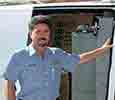
Founder

Office – Phone – Scheduling Good Cook Too!

Office Manager

Lead Tech

Lead Tech

Owner/Partner/Tech

Founder

Office – Phone – Scheduling Good Cook Too!

Office Manager

Lead Tech

Lead Tech

For General Inquiries





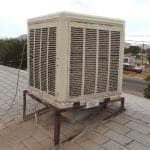
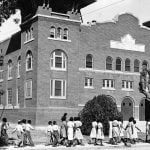

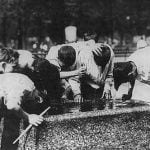

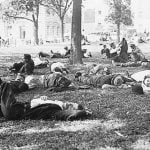
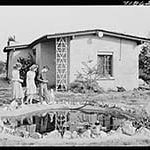

 (602) 867-9480
(602) 867-9480